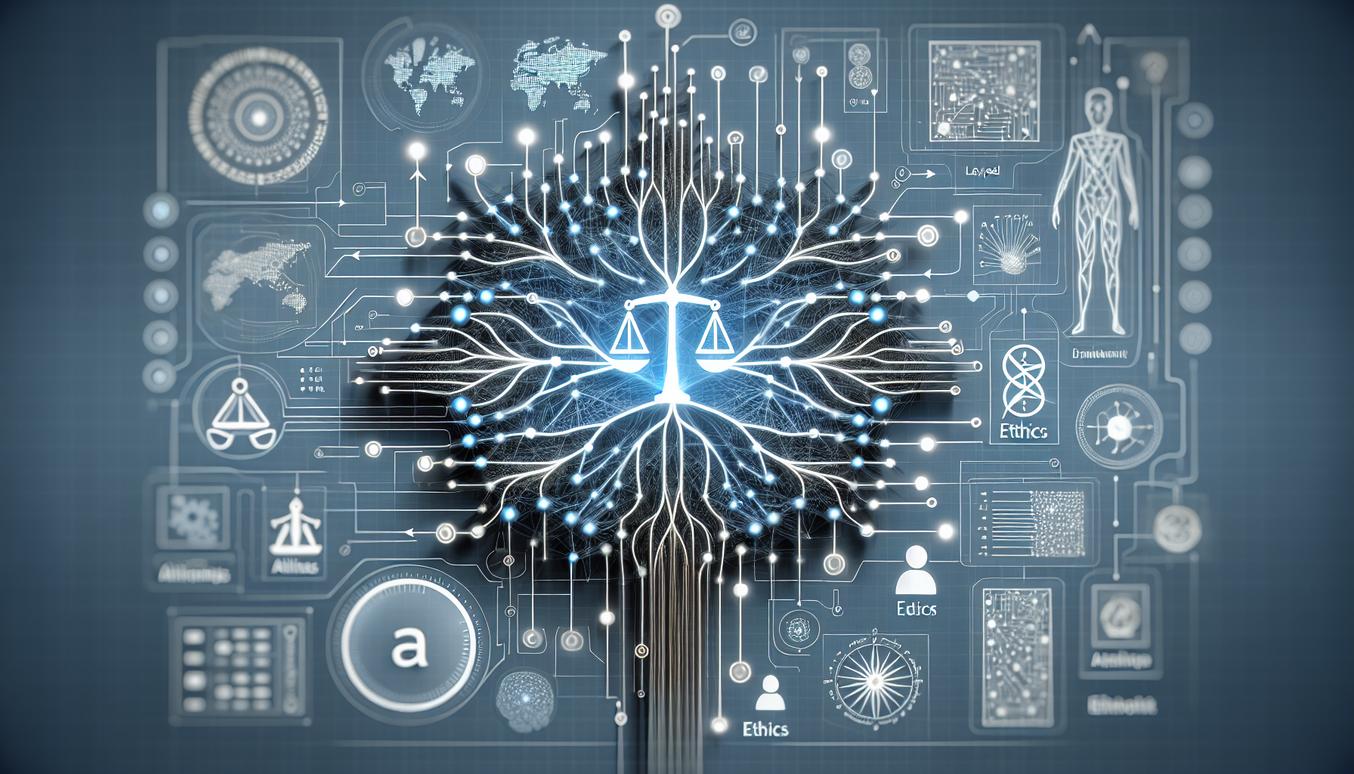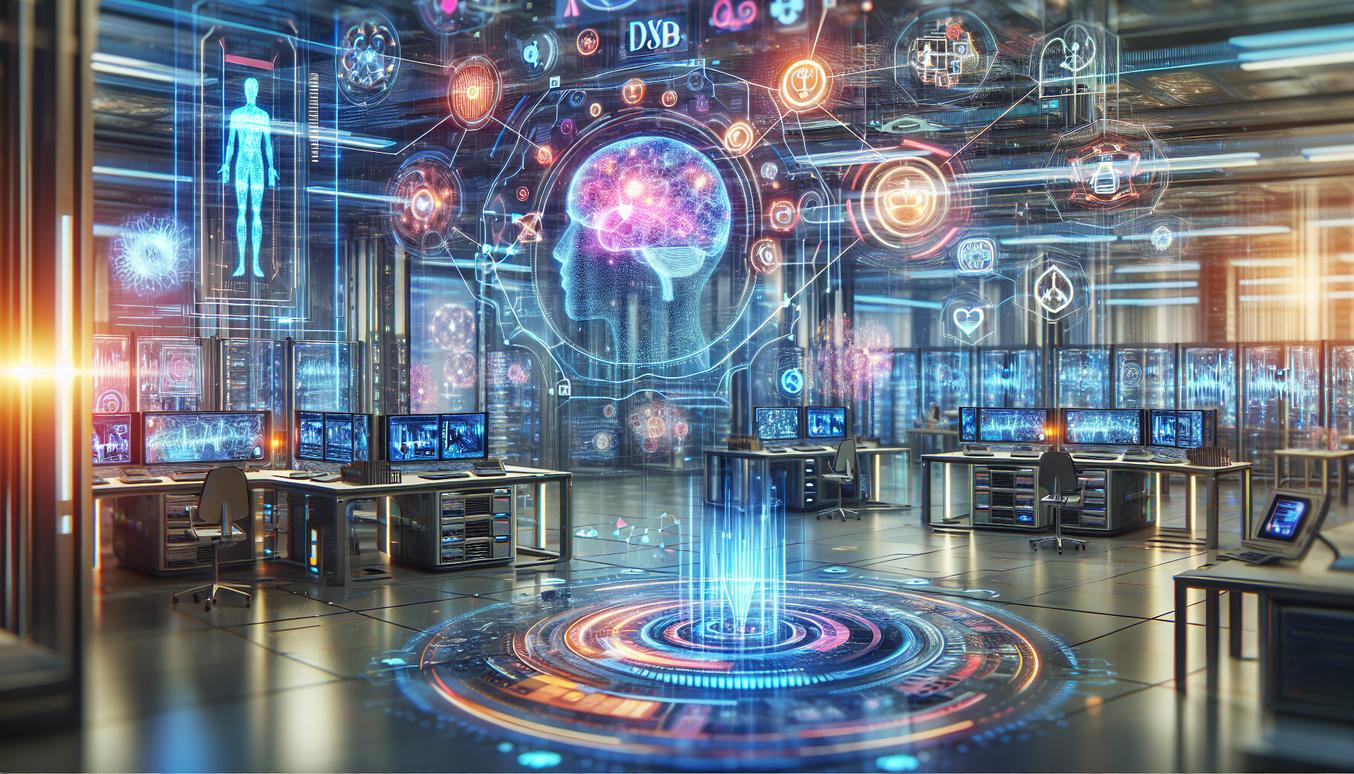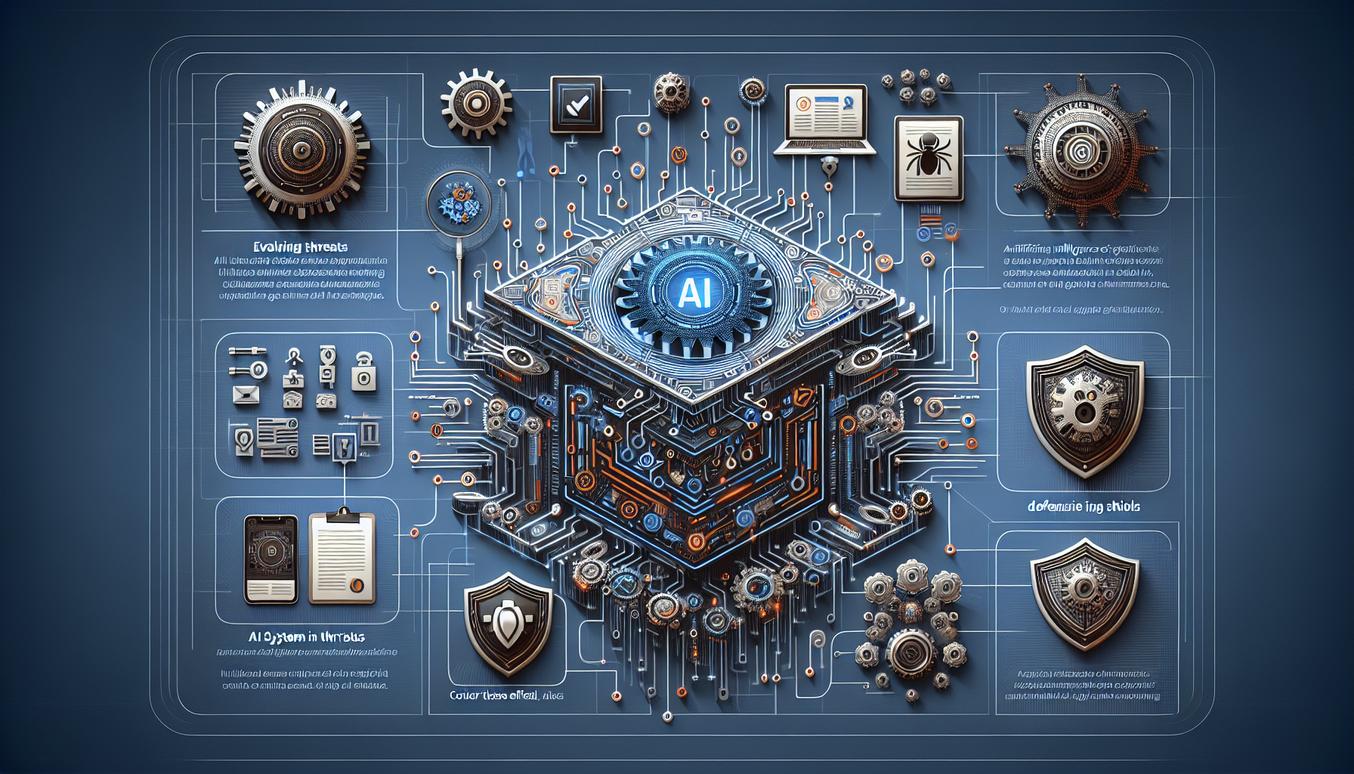The Practitioner’s Guide to Neural Networks: Architecture, Training and Deployment
Table of Contents
- Executive Summary
- Why Neural Networks Matter Today
- Fundamental Building Blocks: Neurons, Layers and Activations
- Training Dynamics: Loss, Optimization and Regularization
- Architectural Patterns: From Feedforward to Transformers
- Practical Training Checklist and Pseudocode
- Common Pitfalls and Debugging Strategies
- Evaluation Metrics and Benchmarking Practices
- Deployment Considerations and MLOps Essentials
- Responsible AI: Fairness, Robustness and Interpretability
- Case Vignettes: Healthcare, Finance and Autonomous Systems
- Future Opportunities and Research Directions
- Glossary of Key Terms
- References and Further Reading
Executive Summary
Neural Networks are computational models inspired by the structure and function of the human brain, forming the core of modern deep learning. This whitepaper serves as a comprehensive guide for intermediate to advanced practitioners, providing a deep dive into the theoretical underpinnings, practical implementation, and strategic deployment of neural networks. We explore fundamental concepts from neurons and layers to advanced architectural patterns like Transformers. The content covers the entire lifecycle of a neural network model, including training dynamics, debugging, evaluation, and deployment within an MLOps framework. Emphasizing a forward-looking perspective, this document integrates practical checklists, pseudocode examples, and critical guidance on Responsible AI, preparing technical leaders and data scientists to build effective, robust, and ethical AI systems.
Why Neural Networks Matter Today
The resurgence and dominance of neural networks in the 21st century are undeniable. They have transitioned from a niche academic interest to the engine driving breakthroughs in nearly every technological domain. Their ability to learn complex, non-linear patterns from vast amounts of data makes them uniquely suited for tasks that were once considered intractable for machines. From natural language understanding and computer vision to drug discovery and financial modeling, neural networks provide the foundation for today’s most sophisticated AI applications. The rise of Generative AI, exemplified by large language models (LLMs) and diffusion models for image synthesis, is a direct result of advancements in neural network architectures and large-scale training. Understanding the principles of these models is no longer optional; it is a fundamental requirement for any serious AI practitioner.
Fundamental Building Blocks: Neurons, Layers and Activations
The Artificial Neuron
The most basic unit of a neural network is the artificial neuron, or perceptron. It receives one or more inputs, performs a weighted sum, adds a bias, and then passes the result through an activation function. This can be expressed as: Output = activation(Σ(weight * input) + bias).
- Weights: These are learnable parameters that determine the strength of the connection between neurons. During training, the network adjusts weights to minimize error.
- Bias: A bias term is another learnable parameter that allows the activation function to be shifted to the left or right, which can be critical for successful learning.
Layers
Neurons are organized into layers. A typical artificial neural network consists of three types of layers:
- Input Layer: Receives the initial raw data (e.g., pixel values of an image, numerical features of a dataset).
- Hidden Layers: One or more layers between the input and output. These layers perform the bulk of the computation and feature extraction. A neural network with multiple hidden layers is called a “deep neural network.”
- Output Layer: Produces the final result (e.g., a classification probability, a regression value).
Activation Functions
Activation functions introduce non-linearity into the network, enabling it to learn complex relationships in the data. Without them, a neural network would simply be a linear regression model. Common activation functions include:
- ReLU (Rectified Linear Unit): Outputs the input directly if it is positive, and zero otherwise. It is computationally efficient and the most widely used activation function in modern neural networks.
- Sigmoid: Squeezes values into a range between 0 and 1, often used in the output layer for binary classification tasks.
- Tanh (Hyperbolic Tangent): Squeezes values into a range between -1 and 1.
- Softmax: Used in the output layer for multi-class classification, converting a vector of raw scores into a probability distribution.
Training Dynamics: Loss, Optimization and Regularization
Loss Functions and Backpropagation
Training a neural network involves finding the optimal set of weights and biases that minimizes the difference between the model’s predictions and the actual ground truth. This difference is quantified by a loss function (or cost function). The choice of loss function depends on the task, such as Mean Squared Error (MSE) for regression or Cross-Entropy Loss for classification. The process of minimizing this loss is achieved through an algorithm called backpropagation, which calculates the gradient of the loss function with respect to each weight in the network and updates the weights in the opposite direction of the gradient.
Optimization Algorithms
An optimizer is the algorithm that implements the weight update logic based on the gradients computed by backpropagation. Key optimizers include:
- Stochastic Gradient Descent (SGD): A foundational algorithm that updates weights after processing a small batch of data.
- Adam (Adaptive Moment Estimation): A more sophisticated optimizer that adapts the learning rate for each parameter, often leading to faster convergence. It is a popular default choice for many neural network applications.
Regularization Techniques
Regularization refers to techniques used to prevent overfitting, a scenario where the model performs well on training data but poorly on unseen data. Common methods include:
- L1 and L2 Regularization: Adds a penalty to the loss function based on the magnitude of the model’s weights, discouraging overly complex models.
- Dropout: During training, randomly sets a fraction of neuron activations to zero at each update step. This forces the network to learn more robust and redundant features.
Architectural Patterns: From Feedforward to Transformers
The architecture of a neural network is critical to its success. Different architectures are specialized for different types of data and tasks.
- Feedforward Neural Networks (FNNs): The simplest type of neural network where connections do not form a cycle. Information moves in only one direction, from input to output. They are used for general-purpose tasks like regression and classification on tabular data.
- Convolutional Neural Networks (CNNs): Specialized for processing grid-like data, such as images. CNNs use convolutional layers to automatically and adaptively learn spatial hierarchies of features, from edges and textures to more complex objects.
- Recurrent Neural Networks (RNNs): Designed to work with sequential data, such as time series or natural language. They have connections that form directed cycles, allowing them to maintain an internal state or “memory” of past inputs.
- Transformers: A more modern architecture that has revolutionized natural language processing. Instead of processing data sequentially like an RNN, Transformers use a mechanism called self-attention to weigh the importance of different words in the input data simultaneously. This parallel processing capability allows them to be trained on massive datasets.
Practical Training Checklist and Pseudocode
Training Checklist
- Data Preparation: Preprocess and clean your data. Normalize or standardize numerical features. Split the data into training, validation, and test sets.
- Model Selection: Choose a suitable neural network architecture for your problem (e.g., CNN for images, Transformer for text).
- Hyperparameter Tuning: Select initial values for hyperparameters like learning rate, batch size, number of epochs, and optimizer.
- Training Loop: Implement the training loop to iterate through the data, compute loss, perform backpropagation, and update model weights.
- Monitoring: Track training and validation loss and metrics (e.g., accuracy) over epochs to detect overfitting or other issues.
- Evaluation: After training, evaluate the final model on the held-out test set to get an unbiased estimate of its performance.
Training Loop Pseudocode
This pseudocode illustrates the core logic of training a neural network.
function train_neural_network(training_data, validation_data, epochs, learning_rate): # 1. Initialize model, loss function, and optimizer model = initialize_neural_network_architecture() loss_function = select_loss_function() # e.g., CrossEntropyLoss optimizer = select_optimizer(model.parameters, learning_rate) # e.g., Adam # 2. Start the training loop for epoch in 1 to epochs: # Training phase for batch in training_data: inputs, labels = batch # Zero the gradients optimizer.zero_gradients() # Forward pass: get predictions predictions = model.forward(inputs) # Calculate loss loss = loss_function.calculate(predictions, labels) # Backward pass: compute gradients loss.backward() # Update weights optimizer.step() # Validation phase evaluate_on_validation_data(model, validation_data) # Optional: Save model checkpoint save_model(model, epoch) return modelCommon Pitfalls and Debugging Strategies
Training neural networks can be challenging. Awareness of common pitfalls is key to successful implementation.
- Vanishing/Exploding Gradients: In deep networks, gradients can become extremely small (vanish) or large (explode) during backpropagation, hindering learning. Solutions include using ReLU activations, proper weight initialization, and batch normalization.
- Overfitting: The model learns the training data too well, including its noise, and fails to generalize. Combat this with regularization, dropout, early stopping, and data augmentation.
- Data Leakage: Information from the validation or test set inadvertently leaks into the training process, leading to overly optimistic performance metrics. Ensure strict separation of data splits.
- Incorrect Hyperparameter Choices: A learning rate that is too high can cause the model to diverge, while one that is too low can result in painfully slow training. Systematic hyperparameter tuning is essential.
Evaluation Metrics and Benchmarking Practices
Choosing the right metric is crucial for evaluating a neural network’s performance. The choice depends on the specific business problem.
Classification Metrics
- Accuracy: The proportion of correct predictions. Can be misleading on imbalanced datasets.
- Precision and Recall: Precision measures the accuracy of positive predictions, while Recall measures the model’s ability to find all positive instances.
- F1-Score: The harmonic mean of precision and recall, providing a balanced measure.
- ROC Curve and AUC: The Area Under the Receiver Operating Characteristic Curve (AUC) measures the model’s ability to distinguish between classes.
Regression Metrics
- Mean Absolute Error (MAE): The average of the absolute differences between predicted and actual values.
- Mean Squared Error (MSE): The average of the squared differences. It penalizes larger errors more heavily.
Deployment Considerations and MLOps Essentials
A trained neural network is only valuable when deployed into a production environment where it can make predictions on new data. This process is managed by the principles of MLOps.
- Model Serialization: Saving the trained model’s architecture and weights to a file (e.g., using formats like ONNX or SavedModel).
- Serving Infrastructure: Deploying the model via a REST API endpoint, often using containers like Docker for portability and scalability.
- Monitoring and Maintenance: Continuously monitoring the model’s performance in production for issues like data drift (when production data characteristics change over time) and model degradation.
- CI/CD/CT Pipelines: Automating the process of continuous integration, delivery, and training to ensure that models can be retrained and redeployed reliably and efficiently.
Responsible AI: Fairness, Robustness and Interpretability
As neural networks become more powerful and pervasive, ensuring they are used responsibly is paramount. Responsible AI is a framework for developing and deploying AI systems that are safe, trustworthy, and ethical.
- Fairness: Ensuring that a model’s predictions do not create or perpetuate unfair biases against certain demographic groups. This involves auditing datasets for bias and using fairness-aware machine learning techniques.
- Interpretability and Explainability: Understanding why a neural network made a particular decision. Techniques like SHAP (SHapley Additive exPlanations) and LIME (Local Interpretable Model-agnostic Explanations) can help explain individual predictions from complex “black-box” models.
- Robustness: Ensuring the model is resilient to adversarial attacks and performs reliably under unexpected or noisy inputs.
Case Vignettes: Healthcare, Finance and Autonomous Systems
Healthcare: Diagnostic Imaging
A hospital develops a CNN-based neural network to analyze chest X-rays. Trained on a large, labeled dataset of images, the model learns to identify subtle patterns indicative of pneumonia. In a clinical setting, it acts as an assistive tool, flagging potential cases for review by a radiologist, leading to faster and more accurate diagnoses.
Finance: Fraud Detection
A financial institution deploys an RNN-based model to monitor credit card transactions in real-time. The neural network analyzes sequences of transactions, learning the normal spending patterns for each user. When a transaction deviates significantly from this learned behavior, the system flags it as potentially fraudulent and triggers an alert.
Autonomous Systems: Object Perception
An autonomous vehicle uses a sophisticated neural network that fuses data from multiple sensors (cameras, LiDAR, radar). This model, often a variant of a CNN, is trained to detect and classify objects such as other vehicles, pedestrians, and traffic signs, providing critical input for the vehicle’s path planning and decision-making systems.
Future Opportunities and Research Directions
The field of neural networks is constantly evolving. Key strategies and research directions for 2025 and beyond include:
- Federated Learning: Training neural networks on decentralized data (e.g., on mobile devices) without centralizing the data, preserving user privacy.
- Neuro-Symbolic AI: Combining the pattern-recognition strengths of neural networks with the reasoning capabilities of symbolic AI to create more robust and generalizable intelligence.
- Efficient AI: Developing smaller, more computationally efficient neural network architectures (e.g., through quantization and pruning) that can run on edge devices with limited power.
- Advanced Reinforcement Learning: Leveraging deep neural networks to solve increasingly complex decision-making problems in robotics, game theory, and resource optimization.
Glossary of Key Terms
- Backpropagation: The algorithm used to train neural networks by calculating the gradient of the loss function with respect to the network’s weights.
- Epoch: One complete pass through the entire training dataset.
- Batch Size: The number of training examples utilized in one iteration of model training.
- Hyperparameter: A configuration variable that is external to the model and whose value cannot be estimated from data (e.g., learning rate, number of layers).
- Overfitting: A modeling error that occurs when a function is too closely fit to a limited set of data points.
- Tensor: A multi-dimensional array, the primary data structure used in deep learning frameworks to represent data and model parameters.
References and Further Reading
- Goodfellow, I., Bengio, Y., and Courville, A. (2016). Deep Learning. MIT Press. Available at: https://www.deeplearningbook.org
- Wikipedia: Artificial Neural Network
- Wikipedia: MLOps









